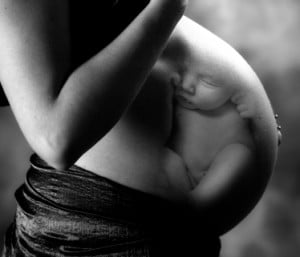
Recent studies have started to link pollution exposure in-utero to impaired childhood lung growth as well as a variety of respiratory ailments. This study, presented at the ATS 2012 International Conference in San Francisco, took a look at how environmental pollutants affect asthmatic children while in the womb.
“In this study, we found that prenatal exposures to airborne particles and the pollutant nitrogen dioxide adversely affect pulmonary function growth among asthmatic children between 6 and 15 years of age,” said lead author Amy Padula, PhD, post-doctoral fellow at the University of California, Berkeley. “This analysis adds to the evidence that maternal exposure to ambient air pollutants can have persistent effects on lung function development in children with asthma.”
Conducted as part of the Fresno Asthmatic Children’s Environment Study (FACES) – Lifetime Exposure initiative, researchers performed repeated evaluations on 162 asthmatic children between the ages of 6 and 15 and their mothers. To help them determine the amount and types of pollutants the child had been exposed to while in-utero, researchers used the mothers’ place of residence during pregnancy and cross referenced the location with geocoded and pollutant concentrations from the Aerometric Information Retrieval System.
To help them determine lung function growth, researchers used spirometry – a simple and painless test that measures the volume and speed of air being exhaled from the lungs. For their data collecting purposes, the researchers measured significant changes in four measurements: the FVC (forced vital capacity – reflects the volume of air that can be blown out after fully inhaling), the FEV! (forced expiratory volume in one second – the volume of air that can forcibly be blown out in one second after fully inhaling), the FEF (forced expiratory flow – reflects the flow of air coming out of the lungs during the middle portion of a forced air exhalation) and the PEF (peak expiratory flow – the maximal flow achieved when air is forcibly exhaled immediately after being inhaled). Researchers then created different measurement models for various factors such as gender, age, race, height and socioeconomic status.
In the end, it was determined that children exposed to nitrogen dioxide during the first and second trimesters of their mothers’ pregnancy had a lower pulmonary function growth during childhood. This applied to both boys and girls. For girls, exposure to nitrogen dioxide during the first trimester resulted in a lower FEV1 growth and exposure to nitrogen dioxide exposure during the second trimester was associated with a lower FEF growth. For boys, nitrogen dioxide exposure during the first and second trimester resulted in a lower FVC growth. Exposure to particulate matter during the first trimester resulted in a lower FEV1 and FVC growth for girls and the same matter for boys resulted in lower PEF and FEF growth in boys.
“This finding adds to the evidence that current air pollutions levels continue to have adverse effects on human health,” Dr. Padula stated. “Few studies have examined prenatal exposure to air pollution and subsequent lung function in childhood. These results suggest that we need to be doing a better job to reduce traffic-related air pollution.”
Dr. Padula and her colleagues also hope to do some future studies on the role of genetic susceptibility to air pollution.
“Currently, our studies are examining the associations between prenatal air pollution and adverse birth outcomes,” she said. “It would be useful to know what makes some people more or less susceptible to the adverse effects of air pollution so we might be able to provide more targeted public health advice.”
Related Articles:
- Being Eco-Friendly – Changes Our Family has Made
- Bottle Fed Babies Gain More Weight in First Year of Life
- Folic Acid in any Form, Beneficial for Women






